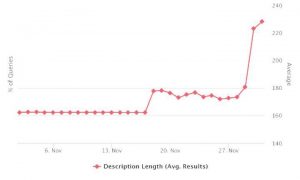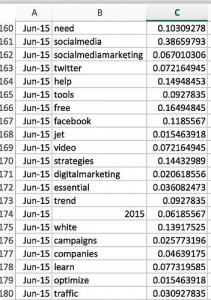While we are already in the second year following the Tax Cuts and Jobs Act, there are a couple and changes to be aware of when filing taxes this year. A comprehensive list of these updates can be found on the IRS website, however, below is a list of notable changes.
1. Tax Rates and Brackets
Like the tax brackets for 2018, there are seven: 10%, 12%, 22%, 24%, 32%, 35%, and 37%, which have been adjusted for inflation in 2019 below:
| Tax Rates | Single | Married Filing Jointly and Surviving Spouse | Married Filing Separately | Head of Household |
| 10% | $ 0 to $ 9,700 | $ 0 to $ 19,400 | $ 0 to $ 9,700 | $ 0 to $ 13,850 |
| 12% | $ 9,701 to $ 39,475 | $ 19,401 to $ 78,950 | $ 9,701 to $ 39,475 | $ 13,851 to $ 52,850 |
| 22% | $ 39,476 to $ 84,200 | $ 78,951 to $ 168, 400 | $ 39,476 to $ 84,200 | $ 52,851 to $ 84,200 |
| 24% | $ 84,201 to $ 160,725 | $ 168,401 to $ 321,450 | $ 84,201 to $ 160,725 | $ 84,201 to $ 160,700 |
| 32% | $ 160,726 to $ 204,100 | $ 321,451 to $ 408,200 | $ 160,726 to $ 204,100 | $ 160,701 to $ 204,100 |
| 35% | $ 204,101 to $ 510,300 | $ 408,201 to $ 612,350 | $ 204,101 to $ 306,175 | $ 204,001 to $ 510,300 |
| 37% | $ 510,301 and over | $ 612,351 and over | $ 306,176 and over | $ 510,301 and over |
2. Increased standard deduction
Since last year, the standard deduction has increased for each filing status:
- For single taxpayers and those married filing separately increased by $ 200 to $ 12,200.
- For those who are married filing jointly, the standard deduction has increased by $ 400 to $ 24,400
- Heads of households standard deduction increased by $ 350 to $ 18,350.
3. Changes to Tax Credit and Deductions in 2018 vs. 2019
- Lifetime Learning Credit: The adjusted gross income amount used to determine the Lifetime Learning Credit has increased by $ 2,000 to $ 116,000.
- Foreign Earned Income Exclusion: The foreign earned income exclusion increased by $ 2,000 from 2018 to $ 105,900 for the 2019 tax year.
- Medical expenses: The “floor” for deducting medical and dental expenses increased to 10%, up from 7.5% in 2018.
- The Saver’s Credit: The Retirement Savings Contributions Credit is available to taxpayers at least 18 years old and who are not full-time students and cannot be claimed as a dependent on anyone else’s tax return. The income limits for the Saver’s Credit have increased to $ 64,000 for those married filing jointly, $ 48,000 for heads of household, and $ 32,000 for single taxpayers and those married filing separately.
4. Alternative Minimum Tax (AMT)
The AMT exemption amount begins to phase out at $ 510,300 for individuals and $ 1,020,600 for married couples filing jointly. This year, like most years, the exemption amounts have been adjusted for inflation and are as follows:
- Single filers: $ 71,700
- Married Filing Jointly & Surviving Spouses: $ 111,700
- Married Filing Separately: $ 55,850
- Trusts and Estates: $ 25,000
5. Affordable Care Act Requirements
This is one that has changed quite a lot from previous years so that the individual shared responsibility payment under the Affordable Care Act has been eliminated. Beginning Jan. 1, 2019, Form 1040 will not include the “full-year health care coverage or exempt” box, and you will not be required to fill out Form 8965 to report health coverage exemptions.
6. Retirement Account Contributions
- 401(k)
- Employee’s annual contribution limit for a 401(k) increased by $ 500 since last year, to $ 19,000 in 2019.
- For employees over 50 years old, the “catch-up contribution limit” has stayed at $ 6,000
- For solo 401(k)s – for SMB owners and self-employed workers, the annual contribution limit increased by $ 1,000 to $ 56,000.
- After-tax 401(k) contributions are limited to $ 56,000.
- Traditional Individual Retirement Account (IRA)
- IRA’s annual contribution limit increased by $ 500 to $ 6,000 in 2019.
- Catch-up contributions have stayed at $ 1,000
- Roth IRAs
- Roth IRA phase-outs have increased to the below ranges:
- Single: $ 122,000 to $ 137,000
- Married Filing Jointly: $ 193,000 to $ 203,000
- Head of Household: $ 122,000 to $ 137,000
- Roth IRA phase-outs have increased to the below ranges:
- SIMPLE
- “SIMPLE IRA” is short for the Savings Incentive Match Plan for Employees, which allows employees and employers to contribute to traditional IRAs set up for employees.
- The annual contribution limit for SIMPLE retirement accounts is $ 13,000, up $ 500 from 2018.
- The catch-up limit for these accounts has stayed at $ 3,000.
7. Taxpayer First Act
Some of the notable takeaways from the Taxpayer First Act, which was signed into law by President Trump in July 2019, include:
A new appeals process
The IRS is now required to hold independent administrative appeals processes under the newly-designated IRS Independent Office of Appeals. The new provision “seeks to ensure that generally, all taxpayers are able to access the administrative review process, allowing for their cases to be heard by an independent decision-maker.” The law also pushes for more transparency within the IRS through the availability of administrative case files for certain individual and business taxpayers.
Innocent spouse relief
Previously, married couples who filed taxes together were jointly responsible for any consequences resulting from their return. The new Taxpayer First Act now provides relief from liability for certain innocent spouses. The law goes lays out a standard of review to be conducted on a de novo basis, where the case would be reviewed without taking any previous rulings into account.
Emphasis on improved customer service
Part of the new Act requires the IRS to revamp its customer service offerings. The organization has one year to develop a comprehensive strategy and two years to put it into action. The IRS will focus notably on modernizing the customer portals and phone services as well as customer-facing employee training to respond to today’s customer service demands
This is just an overview of some of the most notable changes this year, however, it is not a comprehensive list. For a complete overview of adjustments and regulations for 2019, take a look at the IRS website.
Business & Finance Articles on Business 2 Community
(28)
Report Post



